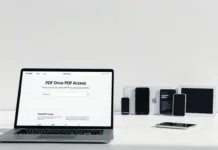Integrating learning management systems (LMS) with HR systems is like creating a superhighway for organizational efficiency by weaving together learning and human resources to streamline operations.
Think of it as the power duo of learning and HR teaming up to make employee training easier and talent management a breeze. But syncing up your LMS and HR system is a strategic move that streamlines employee training and development.
It’s more than simply a technology upgrade. Through the integration of these technologies, organizations may provide employees with a smooth experience in which training requirements correspond with career advancement, performance evaluations, and skill enhancement.
Key Components of LMS Integration
Exploring Learning Management Systems (LMS) and HR Systems
Learning Management Systems (LMS) and HR Systems are like two puzzle pieces waiting to fit together seamlessly. The LMS is the main hub where all the training magic happens – it’s where we keep courses, monitor how you’re doing, and dish out learning material.
But HR Systems? They’re the ones handling your employee info, running the show on recruitment, keeping a close eye on performance reviews, and mapping out career growth.
However, While the LMS hones in on tracking learning content and advancement, the HR system zeroes in on managing worker data and how the organization runs. The LMS focuses on learning content and progress, while the HR system concentrates on employee data and organizational processes.
Prior to combining them for integration, it is essential to comprehend each of their unique capabilities and functions. Because employees need the right skills, feedback, and learning opportunities to succeed. When these elements join forces, they can pack a serious punch to boost the success of your organization.
Identifying Integration Points and Opportunities
The magic happens when we identify the points where these systems can interconnect harmoniously. Think of integration points as doorways, where info from two different systems can mingle and boost each other, creating a well-rounded picture.
These integration points could be as simple as sharing employee profiles and syncing data, or more nuanced like aligning training programs with job duties or filling skill gaps.
To catch these chances, you have to really get to know the ins and outs of both systems. It’s really about cracking the code on how to leverage LMS data to step up our HR game, and equally, use HR insights to refine the learning management system.
By spotting these tie-in chances and leveraging the power of both systems, businesses can whip up a more efficient workforce – mixing education and HR management into one smooth operating tool.
Strategies for Seamless Integration
Choosing the Right Integration Approach for Your Organization
When diving into LMS for employee training integration, the key is to select an approach that aligns with your organization’s needs and capabilities. You’ve got a bunch of ways to link up your system, from ready-to-use connectors all the way to building out your own custom API.
Off-the-shelf connectors offer quicker integration but might have limitations in customization, while custom API development provides flexibility but demands more resources and time.
The best integration strategy may be chosen by taking the organization’s technology infrastructure, financial constraints, and future scalability requirements into consideration.
But you have to think about stuff like keeping data safe, how easy it is to maintain things, and if it can change as the company’s needs shift. Using a systematic approach ensures that the method we use to merge HR and learning systems not only ties them together but also backs our company’s growth plans, making life easier for both managers and learners.
Overcoming Challenges in LMS and HR System Integration
Integration endeavors often come with their set of challenges. In the case of LMS and HR system integration, compatibility issues, data discrepancies, and differing system architectures can pose hurdles.
Thorough planning, open communication between the IT and HR departments, and possible cooperation with software vendors are necessary to overcome these obstacles. Proactive solutions are made possible by early detection of any obstacles in the integration process.
To ensure smooth data flow, thorough compatibility testing may be necessary. To connect the data between the old and new systems, we’ll need to map the fields so they match up.
In addition, fostering a culture of flexibility and providing enough training on the integrated system to stakeholders reduce resistance and ensure a smoother transition.
To beat these hurdles, we have to work together to make sure tech meshes well for better productivity and a consistent user experience, along with tackling technical glitches.
Enhancing Learning and Development Efforts
Aligning Training Programs with HR Data and Talent Management
Aligning learning management systems with HR data and talent management is the secret sauce for targeted and impactful learning experiences. When businesses link their training programs with HR data, they can really zero in on things like skill shortages, possible career trajectories, and vital performance metrics.
Because of this alignment, customized training courses that specifically target these demands may be created. For instance, when HR data highlights a surge in demand for certain skills within the workforce or indicates a pattern of skill gaps in specific departments, the learning management system for employee training can swiftly respond by curating courses that target these areas.
With this alignment, organizations are making sure that their training is directly helping them meet their strategic goals while building a squad that’s got the right skills for both now and whatever comes next. Moreover, this setup is a win for those on the hunt to beef up their skills.
Leveraging Integrated Systems for Personalized Learning Paths
Integrated systems offer the gateway to personalized learning paths tailored to individual employee needs. With HR data and learning management wrapped up in one system, companies can craft personalized training that fits all skill levels, learning preferences, and career goals.
For instance, an employee aiming for a managerial role might have a personalized path that includes leadership courses, mentorship programs, and specific skill-building modules aligned with their career trajectory.
So the systems let you track progress, suggest relevant courses, and change course materials based on how well someone does and what they like.
Because personalized learning matches employees with training tailored to their specific jobs and aspirations, it boosts their motivation and helps them develop skills more effectively. In the end, these customized routes promote ongoing development that is advantageous to the individual as well as the organization.
Conclusion
Merging learning and HR systems in the workplace is like gaining a productivity superpower. So, when you mesh learning and HR systems through LMS integration, it’s like magic – training is perfectly synced with what employees need, their career ambitions, and the big-picture goals of the company.
Meshing these systems using LMS integration helps businesses work smarter by connecting training to what employees need, where they want to go, and the organization’s aims.
Joining HR data with learning programs and creating customized study tracks, these united systems help fuel growth and skill enhancement. Employees get a real boost from learning tailored just for them, and businesses flourish when their teams are packing the right skill set.
At the end of the day, getting an LMS up and running isn’t just about messing with software—it’s a revolutionary journey towards creating an operating, supercharged team primed for success in our rapidly shifting work environment.



